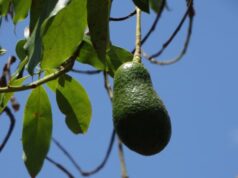Small Red Beans are a staple food in Nicaragua and along with rice and corn are easily stored basic foods. Beans are consumed daily by most of the population and up to 2 or even 3 times a day many of them.
The most common small red bean (as they are generally described) grown here is the variety Phaseolus vulgaris L which are harvested when the pods are dry. You will often see the beans on the side of the road, spread out over a tarp, drying in the sun.
Recent History
In 2007, Nicaragua produced 2.2 million quintals of red beans which wasn’t enough for domestic use and the annual requirement was supplemented by importation. A quintal in Nicaragua is 100 pounds.
The government and various agricultural associations started a program to promote production in order to achieve food sovereignty. As a result, during the 2020/2021 growing cycle, Nicaragua reached a production of 4.6 million quintals of beans, (almost 8% more than the 2019/2020 cycle) which is more than double the production before the program was implemented.
Importation has turned into the exportation in the last two years of 2.1 million quintals of beans.
The prediction for the 2021/2022 agricultural cycle is that a total of 144 thousand producers will together produce a projected 4.8 million quintals, an increase of 4.2% over the last cycle.
Nutrition
Beans provide some key daily nutritional needs, including; complex carbohydrates, plant protein and fiber. They are close to being fat-free as they come out of the pod (without processing). They are sodium and cholesterol-free and provide a good source of potassium.
Many food guides such as the U.S. Dietary Guidelines for Americans consistently recommend a weekly diet that includes 3 cups of legumes (all types of beans).
A ½ a cup of beans, cooked from their dry state and then drained of their cooking liquid will provide;
110 calories, 6 grams of protein, 0.5 grams of fat, 19 grams of carbohydrates, 6 grams of fiber, 1 milligram 1 gram of sodium and 371 milligrams of potassium. Other benefits include; high levels of vitamins and minerals such as copper, phosphorus, manganese and magnesium and iron.
The complex carbohydrates give beans a low glycemic index, ideal for those with insulin resistance. The soluble fiber also traps dietary cholesterol for excretion rather than absorption, helping to lower LDL cholesterol. The bonus is that the insoluble fiber in the beans works on attracting water and keeping everything moving through the colon.
Getting enough protein to increase muscle mass yet stay under your daily calorie limit (and food budget) can be a problem. Small red beans are a great way to accomplish that goal. Beans contain a lot more protein by weight than many other vegetables and there is a cheap, plentiful supply in Nicaragua.
Trivia:
Saint Isidore the Farm Laborer (in Spanish: San Isidro Labrador) is the Catholic patron saint of farmers. His “feast day” (Día de San Isidro) is celebrated on May 15th, the day of his passing in the year 1130. Isidro de Merlo y Quintana, by his real or given name was as a farmworker from Spain with a deep reverence for the poor and for animals
The Spanish profession named “Labrador” comes from the verb labrar, meaning to till, plow or otherwise work the land for sowing. It’s worth noting that the translation to “laborer” doesn’t truly identify San Isidro’s affinity for farming.






